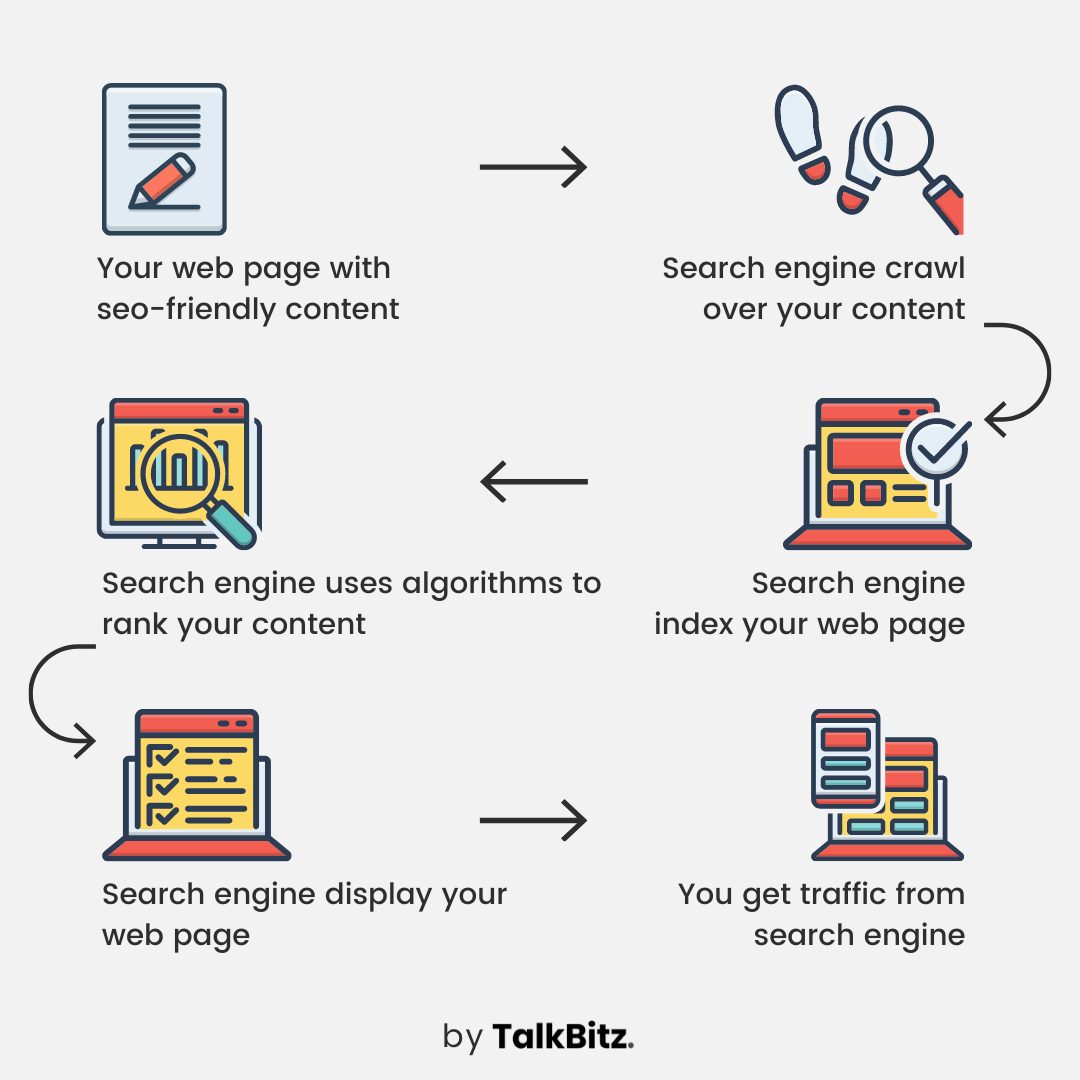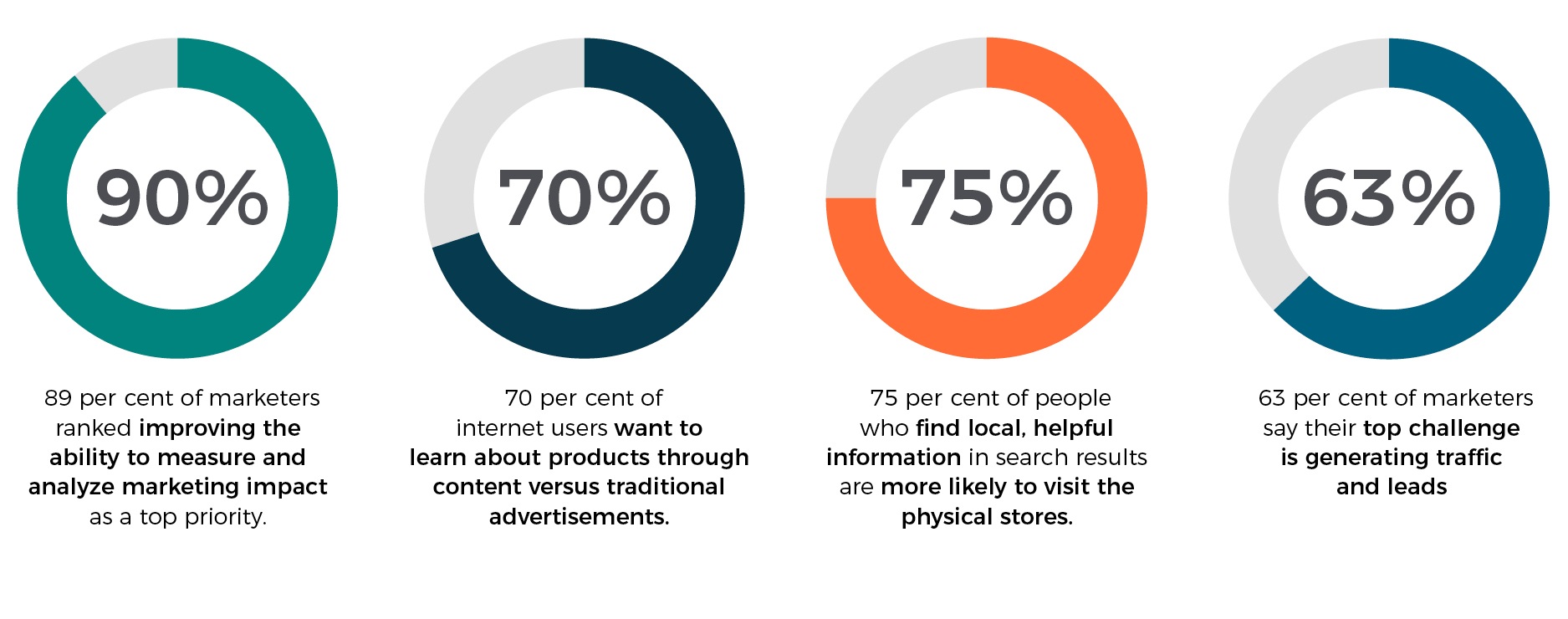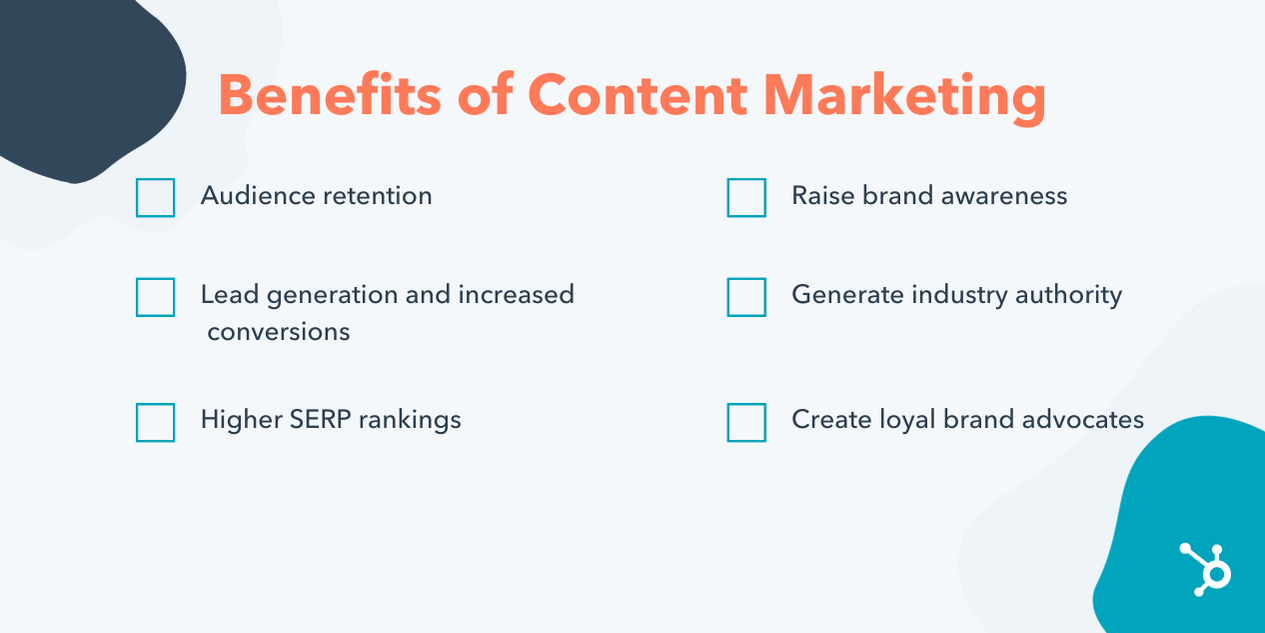Understanding the semantic values of content is essential in today's digital landscape. Content refers to the information, ideas, and messages conveyed through various mediums such as text, images, videos, and more. It plays a crucial role in engaging audiences, conveying messages effectively, and driving desired actions.
Whether it's a blog post, social media update, or website copy - content serves as the backbone of communication strategies for businesses and individuals alike. By grasping what content means and how to create compelling material, publishers can successfully connect with their target audience and achieve their goals in the online realm.
Understanding Content
Definitions

In American English, content typically refers to the substance, expression, or material within something. It is commonly used to describe the expression of information presented in a piece of writing or media. The pronunciation of "content" may vary based on regional accents and dialects. On the other hand, British English often uses content to describe a state of satisfaction or fulfillment. In this context, expression serves as an adjective expressing being pleased or satisfied with one's current situation.
When examining the usage of content as a noun, it signifies the substance or material contained within something like text, images, videos, etc., and expression. This form is closely associated with the information provided in various mediums such as websites and publications. Conversely, when employed as an adjective, content denotes a state of being satisfied or fulfilled—implying happiness, acceptance, and expression with one's present circumstances.
Content Usage
As a Noun
- Definition and Scope: When we talk about content as a noun, we're referring to the essence or material contained within a medium—whether it's a book, a website, a video, or any other form of communication. This encompasses everything from written articles and blog posts to multimedia elements like videos, podcasts, images, and interactive graphics. It is the information and experiences created and shared to engage a specific audience.
- Diversity in Forms: The beauty of content lies in its diversity. In the digital age, content is not limited to traditional text-based formats. It spans a wide array of mediums, including but not limited to:
- Textual Content: Articles, blog posts, reports, and e-books that inform, persuade, or entertain.
- Visual Content: Images, infographics, and videos that capture attention and convey messages in an engaging manner.
- Audio Content: Podcasts and audio recordings that provide information or entertainment in an audible format, catering to users on the go.
- Interactive Content: Quizzes, polls, and interactive infographics that engage users in a dynamic interaction, offering personalized results or insights.
- Role in Specific Mediums: Each medium that utilizes content does so with a unique purpose and audience in mind. For instance, social media platforms thrive on short-form content that prompts immediate engagement and shares, while educational websites may prioritize long-form articles and videos designed to provide in-depth knowledge.
As an Adjective
- Conveying Satisfaction: The adjective form of "content" paints a picture of inner peace and satisfaction. It describes a state of being where desires and needs are fulfilled, leading to happiness and acceptance. This usage is common in everyday language, reflecting personal well-being and emotional contentment.
- Expressions of Positive Emotional States: When someone expresses that they are "content" with a situation, it denotes a positive emotional state—a sense of satisfaction derived from achieving or possessing something desirable. This can range from the simple pleasures of enjoying a favorite meal to the profound fulfillment found in meaningful work or relationships.
- Contextual Usage: The adjective "content" often finds its place in narratives that emphasize well-being and the pursuit of happiness. It might be used to describe the serene feeling one experiences in nature, the fulfillment from a job well done, or the peace that comes with acceptance of one’s circumstances.
Significance of Content
SEO Importance

High-quality and relevant content significantly impacts search engine optimization (SEO). By creating optimized content, websites can improve their rankings on search engine result pages (SERPs). SEO professionals devote time to crafting content that attracts organic traffic and engages users. For instance, a blog post with valuable information about a product can drive more traffic to an e-commerce website.
Pros:
- Boosts website rankings
- Enhances user engagement
Cons:
- Requires continuous effort
- Competitiveness in ranking
Context Variability

The meaning of content varies based on the context in which it is used. Different industries and fields may have specific definitions for what constitutes content. Understanding this variability is crucial for effective communication.
In marketing, content might refer to blog posts, social media posts, or email newsletters, while in academia, it could mean research papers or scholarly articles.
Examples:
- Marketing: Social media posts
- Academia: Research papers
Content in Language
Pronunciation
The pronunciation of "content" varies across different regions and dialects. Some say "CON-tent," while others pronounce it as "con-TENT." This difference can also be observed between American and British English speakers. The varied pronunciation adds to the richness of language diversity.
Understanding how people pronounce "content" sheds light on linguistic nuances. For example, in American English, one might hear someone say "I'm con-TENT with my decision," while in British English, it could be expressed as "I'm CON-tent with my choice." These subtle variations showcase the flexibility and adaptability of language.
Idioms Phrases
Idioms and phrases incorporating the word "content" offer deeper insights into its meanings. Expressions like "content of character" or being "content with one's lot" go beyond surface definitions. They delve into concepts like integrity, satisfaction, or acceptance, enriching our understanding of the term.
Exploring idiomatic usage broadens our grasp of language intricacies. For instance, when someone mentions that a person has a strong "content of character," they are referring to their inner qualities rather than just superficial attributes. Similarly, saying someone is "content with their lot" implies they are at peace with their circumstances despite challenges.
Synonyms and Antonyms
Synonyms
"Content" can be synonymous with various words like substance, material, information, and subject matter. These synonyms serve as alternatives that can be used interchangeably to convey similar meanings in different contexts. Using these synonyms effectively enhances writing by adding variety and depth to the content while avoiding repetitiveness. For example, instead of repeatedly using "content," a writer may opt for "substance" or "information" to diversify their language.
Employing synonyms not only enriches the text but also prevents it from becoming monotonous. By incorporating diverse vocabulary choices such as substance or material in place of content, writers can engage readers more effectively and hold their interest throughout the piece. This practice allows for a more dynamic expression of ideas without being constrained by repetitive terminology.
Antonyms
On the contrary, antonyms of "content" encompass words like discontent, dissatisfied, unhappy, and unsatisfied. These terms represent an opposing emotional state characterized by dissatisfaction or lack of fulfillment. Exploring antonyms such as discontent provides insight into contrasting feelings that exist alongside contentment in human experiences. Understanding these antonyms offers a comprehensive perspective on emotions related to satisfaction levels.
Content Usage Examples
In Sentences
"The website's content was informative and engaging." This sentence exemplifies the use of "content" to describe the material on a website. Another example is, "She felt content with her decision," where content denotes a state of satisfaction or happiness. "The content of the book was thought-provoking" highlights how content can refer to the substance or subject matter within something.
These diverse sentence examples showcase the versatility of using "content" in various contexts, whether describing information, emotional states, or substantive material. Understanding these nuances enhances one's grasp of language and communication skills.
Derived Forms
Derived forms of the word "content" include contentedness, discontentment, and discontented. These variations express different emotional states related to satisfaction or dissatisfaction. For instance, contentedness signifies a state of being satisfied or pleased with something, while discontentment conveys a feeling of unhappiness or dissatisfaction.
Exploring derived forms such as contentedness and discontentment expands one's vocabulary repertoire and comprehension regarding emotions and attitudes towards different situations. By understanding these derived forms, individuals can articulate their feelings more precisely in written or verbal communication.
Words Nearby Content
Related Terms
"Content" is closely related to various terms like context, substance, material, information, and subject matter. These words are often used interchangeably with "content" and play a crucial role in conveying meaning effectively. For instance, understanding the context of content helps in interpreting its significance accurately.
Familiarity with these related terms enhances one's grasp of the concept of content. When discussing a piece of writing, for example, recognizing the substance or material it contains aids in analyzing its depth and relevance. Therefore, being well-versed in these associated words enriches communication skills.
Connection to Communication
The connection between these terms extends beyond mere definitions; they form the foundation of effective communication strategies. By grasping the nuances between "content," "information," and "subject matter," individuals can tailor their messages appropriately based on audience needs. For instance, when crafting marketing materials, understanding how substance differs from context can refine messaging for better engagement.
Moreover, utilizing these related terms strategically can elevate content creation efforts across various platforms. Whether drafting an email newsletter or developing website copy, incorporating elements of substance and subject matter ensures that the message resonates with readers effectively.
Content in Digital Age
Evolution in SEO

In the digital age, content plays a crucial role in Search Engine Optimization (SEO). Over time, search engines have shifted their focus to prioritize high-quality, relevant, and user-friendly content. This evolution has led SEO strategies to adapt by emphasizing the creation of valuable content that meets users' needs. For instance, Google's algorithms now favor websites that offer informative and engaging content rather than keyword-stuffed pages.
Developing a robust content strategy is essential for businesses aiming for a successful online presence. A well-thought-out content strategy involves planning, creating, distributing, and managing content to achieve specific goals such as increasing website traffic or improving brand visibility. By aligning the created content with the target audience's preferences and interests through data-driven insights, companies can effectively attract and engage their desired customers.
Content Strategy

One key aspect of this shift is understanding what does content mean, not just from a textual perspective but also in terms of multimedia elements like images and videos that enhance user experience. Incorporating diverse types of media into your online presence can significantly impact how audiences interact with your brand. For example, an e-commerce website featuring product videos alongside detailed descriptions tends to capture more customer interest compared to text-only listings.
A well-executed content strategy, backed by thorough research on consumer behavior and market trends, can help businesses stay ahead in the competitive digital landscape. By consistently delivering valuable information through various channels like blogs, social media posts, or email newsletters tailored to different stages of the customer journey ensures continuous engagement with your target audience.
Crafting Effective Content
SEO Writing Tips

Crafting effective content involves understanding what does content mean and how to optimize it for various purposes. One crucial aspect is incorporating relevant keywords naturally into the text. This helps improve SEO rankings by making the content more discoverable to search engines. For instance, if a website sells organic skincare products, using keywords like "best organic face cream" can attract potential customers searching for such products.
Writing unique and original content is essential in digital marketing to avoid duplicate content issues that can harm a website's ranking on search engine results pages (SERPs). By providing fresh perspectives or insights on a topic, businesses can stand out from competitors and establish themselves as industry leaders. Structuring the content with headings, subheadings, and bullet points enhances readability and aids in SEO optimization by breaking down information into digestible chunks.
Audience Engagement
Another vital aspect of crafting effective content is audience engagement. Engaging content captivates the target audience's attention and encourages them to interact with the material further. To achieve this, employing storytelling techniques within blog posts or articles can create an emotional connection with readers, making them more likely to resonate with the message being conveyed.
Interactive elements such as quizzes, polls, or surveys are powerful tools for enhancing audience engagement by encouraging participation from visitors. These features not only make the content more dynamic but also provide valuable insights into user preferences and behaviors. Moreover, fostering audience participation through comments sections on blogs or social media platforms enables direct interaction between brands and consumers while building a sense of community around the shared interests.
Incorporating Press Releases as a Content Type

An often overlooked but powerful form of content within the digital landscape is the press release. Press releases are official statements issued to media outlets to announce a range of news items, including product launches, events, updates, and achievements.
They serve as a critical tool for businesses looking to convey important information in a formal, authoritative manner. In our blog post on press release examples, we explore various types of press releases and how they can be used effectively in different communication strategies.
In the context of content strategy, press releases can significantly enhance a brand's visibility and credibility. By distributing well-crafted press releases, businesses can reach a wider audience, attract media attention, and provide a boost to their SEO efforts through backlinks from reputable news sites.
The strategic use of press releases complements other forms of content such as blog posts, social media updates, and video content, offering a multifaceted approach to digital marketing. For businesses aiming to establish a strong online presence, incorporating press releases into their content portfolio is an effective way to ensure their messages are communicated clearly and professionally across a variety of channels.
Relevant Real-World Statistics for Today's Content Landscape

- According to a survey by Demand Metric, "70% of marketers are actively investing in content marketing in 2021." This statistic emphasizes the critical role that content, in all its forms, plays in modern marketing strategies. It also underscores the need for businesses to diversify their content to stand out in a crowded digital marketplace.
- The Pew Research Center reports that "as of 2021, 31% of Americans regularly get their news online." This shift towards digital news consumption illustrates the growing influence of online content, including press releases, on public perception and awareness. It highlights the opportunity for businesses to leverage digital platforms to reach their target audience effectively.
Closing Thoughts

The exploration of content has revealed its multifaceted nature and crucial role in various contexts. Understanding the nuances of content, recognizing its significance in communication, language, and the digital landscape, as well as mastering the craft of creating effective content are essential endeavors for anyone seeking to convey messages effectively. Synonyms, antonyms, usage examples, and contextual relevance all contribute to a comprehensive understanding of this fundamental concept.
In a world driven by information and communication, delving deeper into the layers of content is not just beneficial but necessary. The insights gained from dissecting content can empower individuals to communicate more clearly, connect with others more effectively, and navigate the complexities of the digital age with confidence. Embracing continuous learning and refinement in content creation is key to staying relevant and impactful in a world overflowing with information.
Frequently Asked Questions
What is the significance of understanding content?
Understanding content helps in conveying information effectively, engaging the audience, and achieving communication goals. It ensures clarity, relevance, and impact in delivering messages across various platforms.
How does language play a role in creating effective content?
Language choice influences how content is perceived by the audience. The tone, style, and vocabulary used can enhance or diminish the message's effectiveness. Crafting content with appropriate language fosters better engagement and comprehension.
Why are synonyms and antonyms important for enriching content?
Utilizing synonyms and antonyms enhances the depth of content by providing variation in expression. It prevents redundancy, improves readability, and offers diverse perspectives on a topic to cater to different audiences' preferences.
How can one effectively craft digital-age-friendly content?
Crafting digital-age-friendly content involves optimizing for search engines (SEO), incorporating multimedia elements for visual appeal, ensuring mobile responsiveness for accessibility, utilizing storytelling techniques to captivate readers' attention, and adhering to online reading habits such as scannability.
Why are examples crucial when discussing the usage of specific terms like "content"?
Providing usage examples clarifies how a term is applied contextually. Examples offer practical illustrations that aid comprehension by showcasing real-world scenarios where the term "content" is appropriately utilized across different contexts or industries.
Free Press Release Template
Tell us where to send your PDF:






